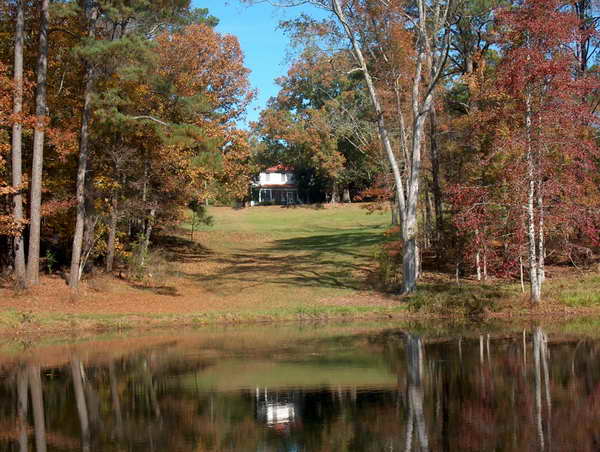The reason I can get away with such a derogatory title for this post is because I am a librarian, or at least I am by training, and for much of my career, by practice as well. Over the last few years, I have picked up several books, both fiction and nonfiction, that feature libraries or librarians as the primary subject. Here is an annotated list of these books, which I highly recommend to librarians, library patrons, or bibliophiles in general. Enjoy!

Nonfiction
The Library: A Fragile History by Andrew Pettigrew
In this dense and comprehensive history of libraries, the author also tells the story of the evolution of the book: its creation, distribution, preservation, and impact on civilization. He devotes considerable time discussing how private collections were the norm for libraries during most of recorded history and that public access is a relatively new phenomenon.
The fragile part of the history is illustrated by the many threats to books and the libraries that contain them, from natural disasters to warfare, from censorship to reduced support by private and government sources. The book begins and ends with perhaps the most famous library of the ancient world at Alexandria, which in some ways serves as a model for all libraries that followed. Written language is one of the hallmarks that separates our species from all the rest; therefore, the institutions that serve as repositories of written language must be considered as instrumental in documenting and preserving that distinction.
One of the more interesting takeaways from this book is how, at least until the modern era, fiction was held with such little regard by the literate elite of western society (and this book focuses on libraries of western civilization). Novels were even considered a corruptive force, especially as they were in such demand by women as a form of escape from the drudgery of living in subservience to their husbands, taking care of children, and maintaining the home.
The author contemplates the impact the digital age will have on books, which could be perceived as another threat to the library. It is reassuring that he observes how radio, movies, television, and computers may have competed for the attention of readers, but books and libraries continue to survive and at times even thrive in the age of mass media.
Overdue: Reckoning with the Public Library by Amanda Oliver
Public libraries and the services they provide usually reflect the communities where they are located. The public library where I was the director was medium sized in a county of about 43,000. We had our share of quirky folks, unruly adolescents, crusty curmudgeons, and houseless citizens among the day-to-day users who came in regularly to check out books or bring their children to story time. Also, our town had the state’s mental institution, which had been decentralized in the 1960s resulting in plenty of mentally ill people in government subsidized houses, or sometimes, just wandering the streets. As expected, many of them found their way to the library.
My public library was probably typical for a rural community in central Georgia — plenty of challenges but nothing too much out of the ordinary. By contrast, Amanda Oliver spent several years working in a public library in one of the toughest trenches a government employee can work: Washington DC. If there is a common thread running through her book, it is a sense of conflict the author feels about knowing how desperate many of her patrons were for help just to survive and trying to preserve her own mental health and physical safety while trying to assist them with their needs. She bemoans the fact that this country is woefully unable to take care of the poor and mentally ill, who have to rely on help wherever they can find it.
By their very nature, public libraries are places of refuge for the marginalized, and librarians are first responders, sometimes in the most literal sense. Oliver shares stories of having to administer first aid and other medical procedures for people with addiction and a whole host of health problems. She calls into question the role of the public library in a society that has abandoned those who are at most risk from economic insecurity and mental illness, including those with violent tendencies. She offers some chilling reports about librarians who have been injured or killed by crazed individuals who come through their doors. She reports how installing security equipment and hiring public safety personnel have become top priorities in many public libraries around the country.
On the bright side, it is clear that Oliver believes strongly in the mission of the public library to provide information services, very broadly defined, and to assist patrons with needs that have little or nothing to do with reading. In spite of how difficult her job was, she stayed committed to directing people to information, resources, and agencies they needed, sometimes just to survive. She effectively offers her readers a healthy, though not copious, collection of statistics to drive home her points. Perhaps the most encouraging stat of all for me was that the number of public libraries in America is greater than the number of Starbucks. We must be doing something right here.
The World’s Strongest Librarian by Josh Hanagarne
Hanagarne managed to write the funniest and the saddest book in this category at the same time. It is sad because the author has struggled so many years with a disorder that is so misunderstood and at times terribly debilitating. It is funny because Hanagarne manages to find humor even in the worst circumstances. His comic timing is quite good, with prose that reminds me so much of David Sedaris. Hanagarne makes his father sound remarkably similar to the way Sedaris makes his father sound. They both come off as crusty, no-nonsense guys who were forever trying to toughen up their children to face the “real world.”
Hanagarne’s memoir doesn’t focus nearly as much attention on his work as a librarian as it does his upbringing in a Mormon family facing the embarrassing and humiliating symptoms of Tourette Syndrome, which he personified by giving it a name – Misty (as in Miss T). His determination and tenacity in wrestling with his condition is inspiring. He never gave up. On the contrary, he often pushed himself into situations that anyone else with Tourette Syndrome would avoid, like choosing a profession that is traditionally associated with being quiet. And then he continued to bust open stereotypes by being a librarian AND a fitness enthusiast. It is not surprising that Hanagarne has found fitness regimens to be among the most successful tools in battling Tourettes.
From a confused childhood to the discovery and love of reading, from the awkwardness of making friends and dating to pushing through as a high school athlete, from pulling away from the faith of his parents to finding happiness in marriage and being a father, Hanagarne’s story is touching, heart wrenching, fascinating, and funny. And his use of Dewey Decimal System call numbers and subject headings as chapter leads is brilliant. Josh Hanagarne is a remarkable human being.
The Library Book by Susan Orlean
The author cleverly uses the Los Angeles Central Library fire in 1986 as her main hub to explore the history and culture of libraries. Her focus is generally on the Los Angeles system, but throughout the book she takes a few side roads to include libraries, past and present, in other locations in this country and around the world. Her deep appreciation of this ancient institution is abundantly evident throughout the book. She manages to take what so many people would consider a deadly boring topic and make it intriguing, fascinating even. Although at times the chapters read more like separate essays, some of which could easily stand alone, Orlean manages to make them flow together and connect as she unravels the mysteries surrounding the disaster in L.A. However, the real reason the book is a bestseller is because Orlean is such a good writer. The Library Book is a wonderful combination of biography, history, mystery, and investigative reporting.
I Was a Stripper Librarian by Kristy Cooper
Okay, yes, the title is titillating, the cover looks just a tad risque, and this is a self-published book. But, let’s immediately set aside our bibliographic elitism, decide we are NOT going to judge a book by its cover, and take an honest look at this memoir from someone who worked in two professions that, at least on the surface, seem like polar opposites. Kristy Cooper argues that being a stripper and a librarian are not nearly as different than most of us would think, and she provides enough examples to be convincing. Admittedly, this book cannot be taken as seriously as some of the other titles in this list — the authors are not trying to do the same thing here.
I suspect most Americans would be surprised to learn how many women and men enter the sex industry, as the author labels it (although stripping seems to stretch the definition to my way of thinking), in order to make ends meet or to get out of debt, especially student loans. A simple Google search on the topic brings up numerous TV spots and articles posted over the last few years about young folks who pay their way through college by stripping. Cooper is unapologetic about her decision to do the same — it was simply pragmatic. She tried other more conventional jobs, but none paid as well for the amount of time and labor required.
This book is well-written and interesting. Cooper does not come across as some bubble-headed babe trying to impress us with her lap-dancing talents, although some of the stories she shares are fascinating, troubling, and at times hilarious. Her vocabulary is impressive. Her writing style is rather simple and straightforward, but it works fine for this type of book. She assures her readers that there are plenty of people in the adult entertainment industry who are extremely intelligent, some of whom have advanced degrees like she does. Although she is no longer in the industry, she certainly advocates for it. She is also a remarkable champion for the library profession and has even established a nonprofit organization to facilitate her philanthropic work, especially for librarians.
Ultimately, readers will either approve or disapprove of Cooper’s dual occupational choice, but no one can deny that she made it work for her circumstances. She implies that stripping never made her feel dirty or immoral, but I have to wonder if the objectification factor eventually did a number on her. The best example, and perhaps the saddest to me, was when she was considering whether or not to get implants because her breasts were smaller than that of the average female strippers with whom she worked. Even though some of her male customers recommended she leave them alone, she knew that a bigger chest in a topless bar translated to more income. At one point she decided that her breasts were not really a part of her body as much as they were a commodity or resource for her craft. As true as that may be, I hated to hear it.
Fiction
The Midnight Library by Matt Haig
I read this book for an online book club I helped moderate for the university where I work, but I was intrigued by it when I first saw it reviewed in the New York Times Book Review. My honest assessment of this novel is that it is entertaining, but it still has more of a juvenile style to it, probably because Haig has written several books for children. The subject matter and language are clearly for an adult audience, but the plot and rhythm still feel more like a fairy tale to me, perhaps like a C. S. Lewis children’s novel.
The premise of The Midnight Library is very similar to the film “It’s a Wonderful Life.” The name of the town in the timeless holiday classic film is Bedford Falls; Nora’s album is called Pottersville; a character in the novel has the last name Bailey. (The author tweeted about this to a fan.) If we give too much thought to the mechanics behind the story – the impossible challenges presented by being inserted into the middle of an unfamiliar life – the novel doesn’t exactly “work” so well. I had to employ a type of dissociation to make it through.
Nora and Hugo discuss Schrödinger’s cat, the popular thought experiment that illustrates an apparent paradox of quantum superposition – alternate possibilities happening simultaneously. Is there a deeper meaning that Haig is trying to get at with this novel or is it just supposed to be an entertaining read? Is this a story that explores the concept of quantum mechanics and string theory? At any rate, Haig’s novel prompts readers to think (or rethink) how different their lives might have been had they made different choices along the way.
I am surprised at how much attention it received from major review sources, but then again, Haig is a journalist too, so there could be some professional courtesy going on as well. Haig does a good job of pulling the reader into the story. Most of us can imagine ourselves in Nora’s shoes and are compelled to speculate what decisions we would make given the circumstances.
The Personal Librarian by Marie Benedict and Victoria Christopher Murray
This may not be a great novel, but it is a good story based on the life of a real person. Belle da Costa Greene was J. P. Morgan’s personal librarian, an amazing African-American woman who was forced to hide her true identity and pass as white in order to succeed at an incredibly important job. Using biographies, personal papers, and secondary sources, the authors attempt to recreate the life and accomplishments of Greene, complete with her romantic relationships, her hardships, her family life, her savvy business dealings, and the struggles she faced through it all in keeping such a huge secret. In the category of historical fiction, this novel ranks among the best I have read.



















